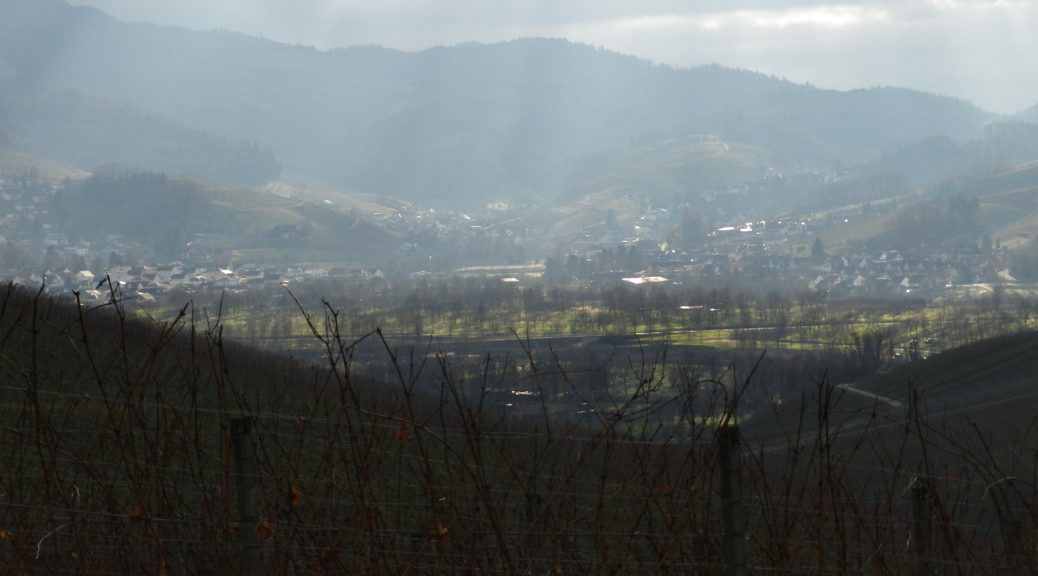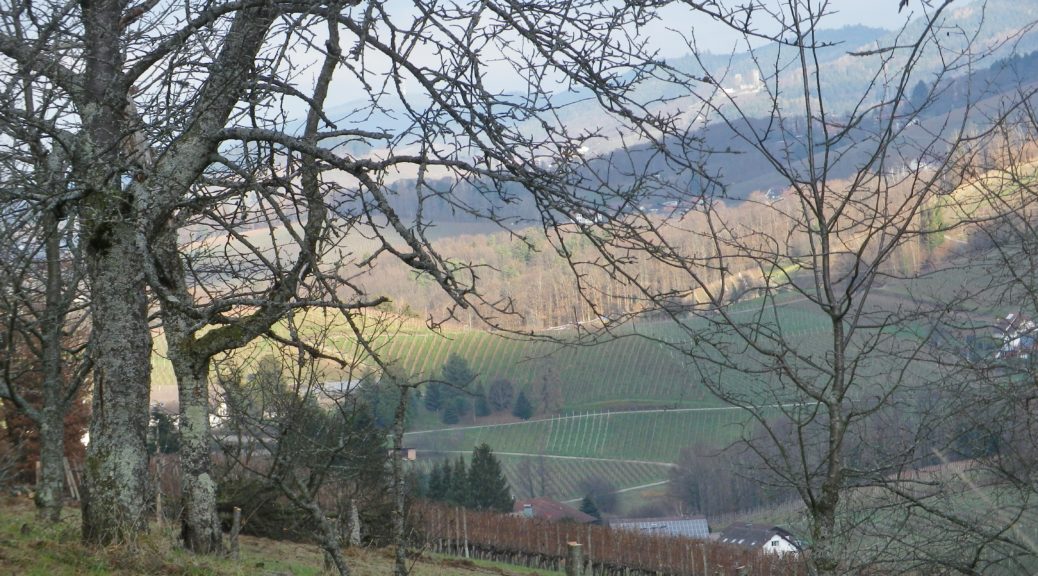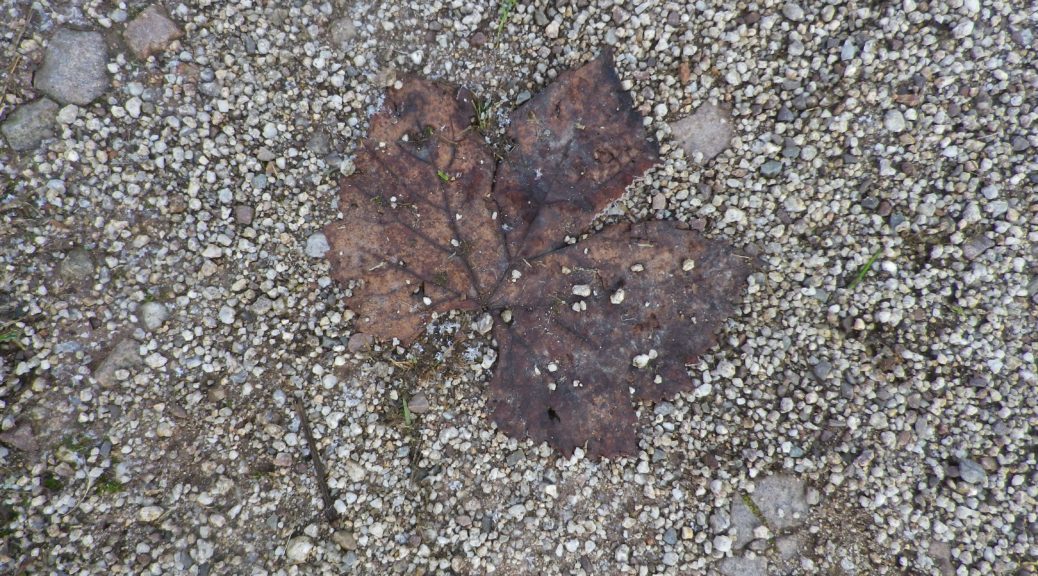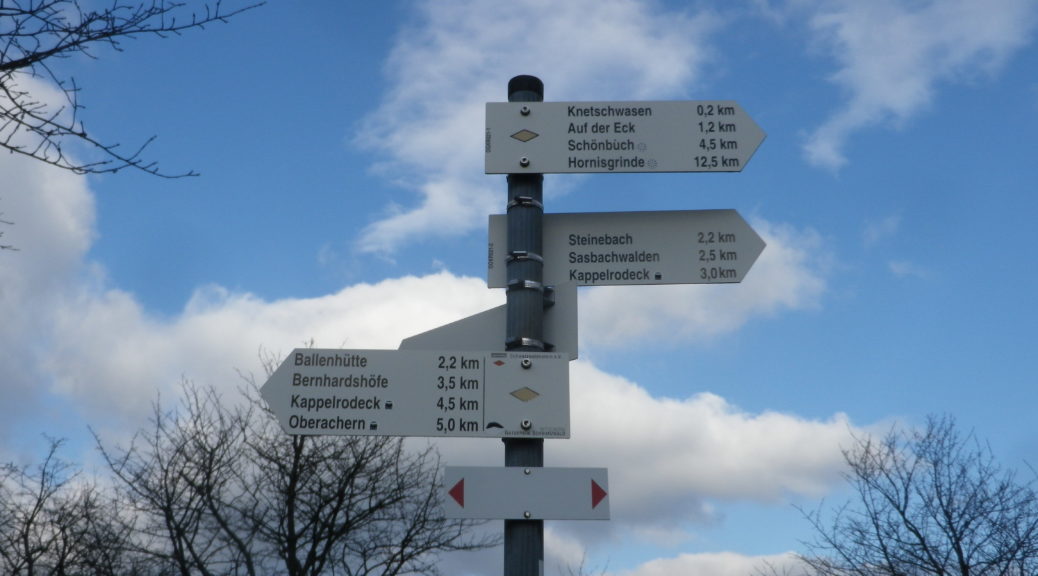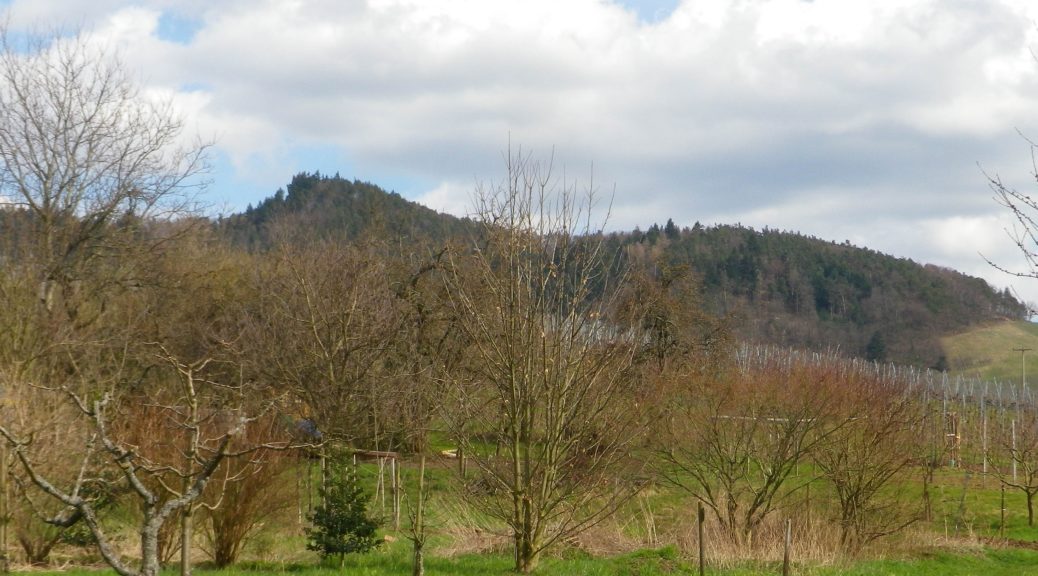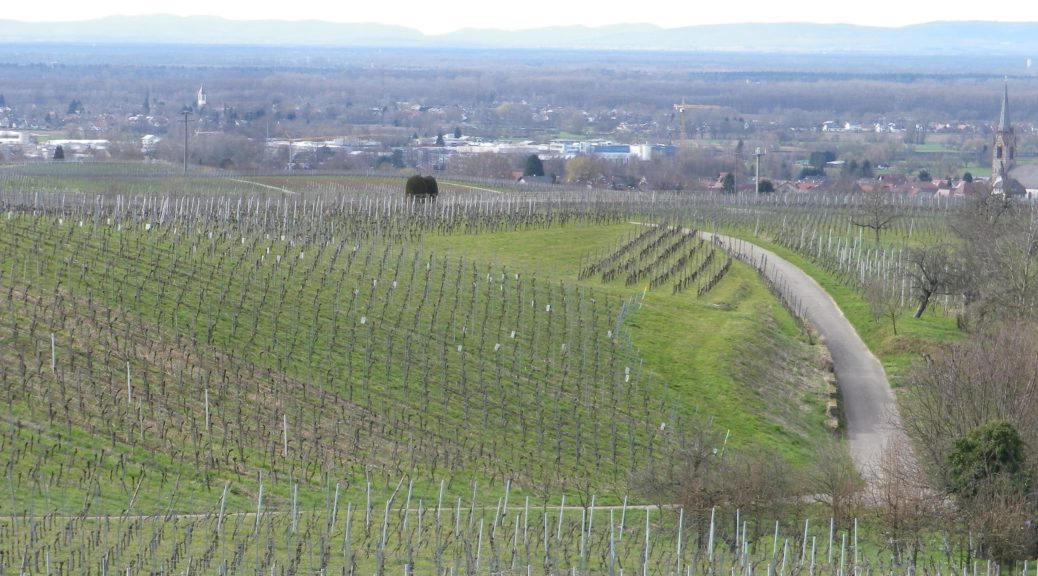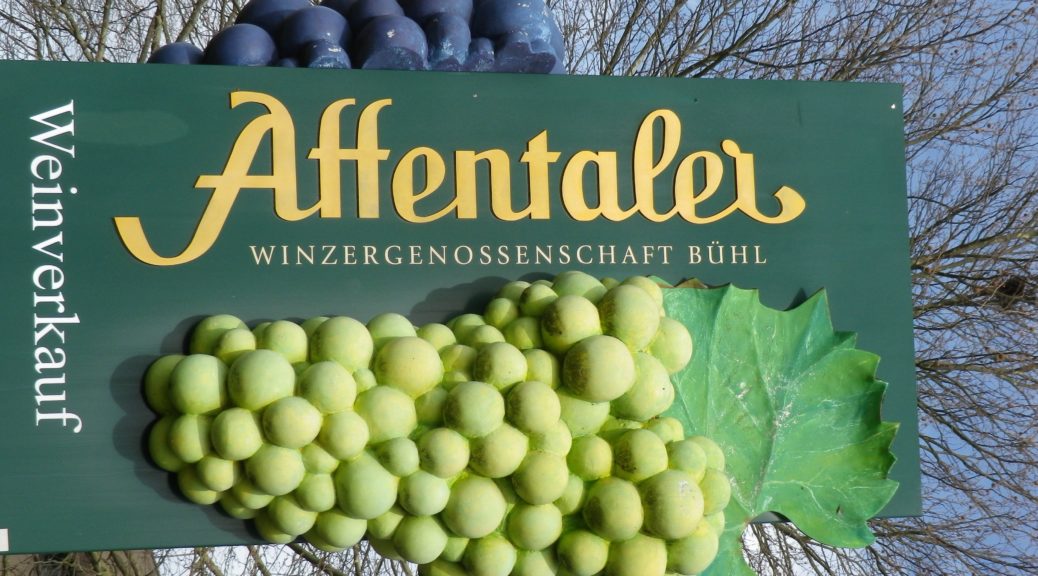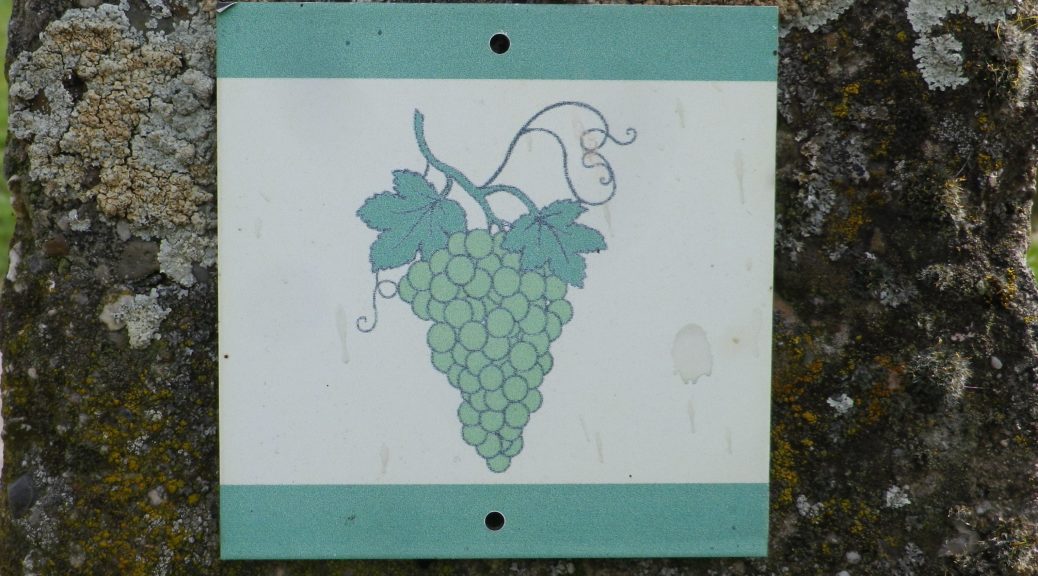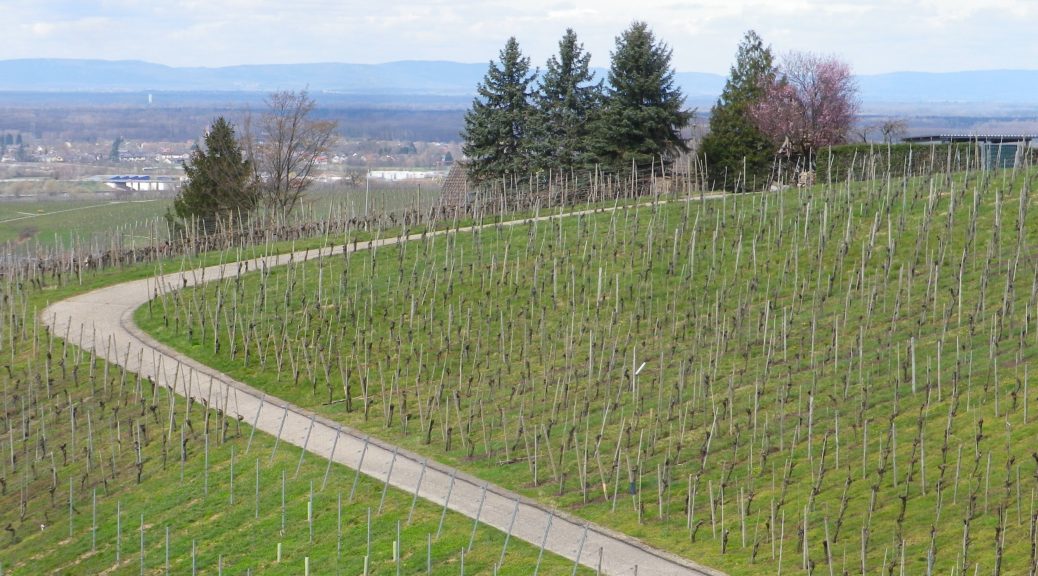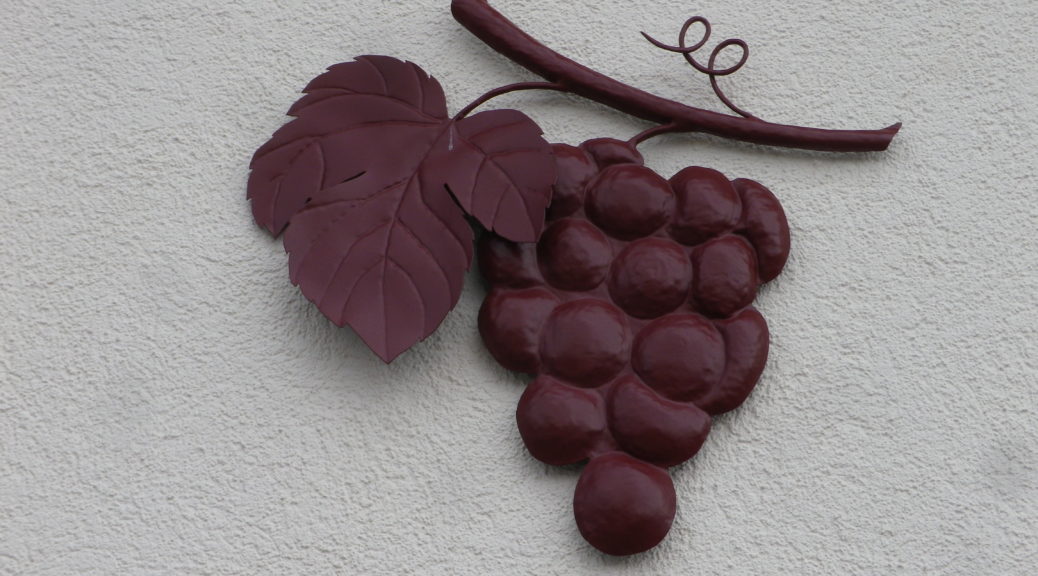Tag Archives: Ortenau
A Good Witch
Kappelrodeck’s witch is a good one, IMHO. She brings happiness and casts an enchanting spell over the little town and its surroundings. Her spell succeeds in charming and beguiling all who make their way through the relatively narrow pass climbing along the Acher valley at the foot of the Black Forest Mountain range.
Certainly, the landscape bewitches with its fascinating geology and natural beauty! Hills mound about like lumps on the landscape. Most of their slopes contain vines. These face the sun at different times of the day. The sun, along with the rain (and snow in the winter), make these incredibly green. The tops of the hills are often covered with pines: Tall, dark and majestic. Behind them the Black Forest begins.
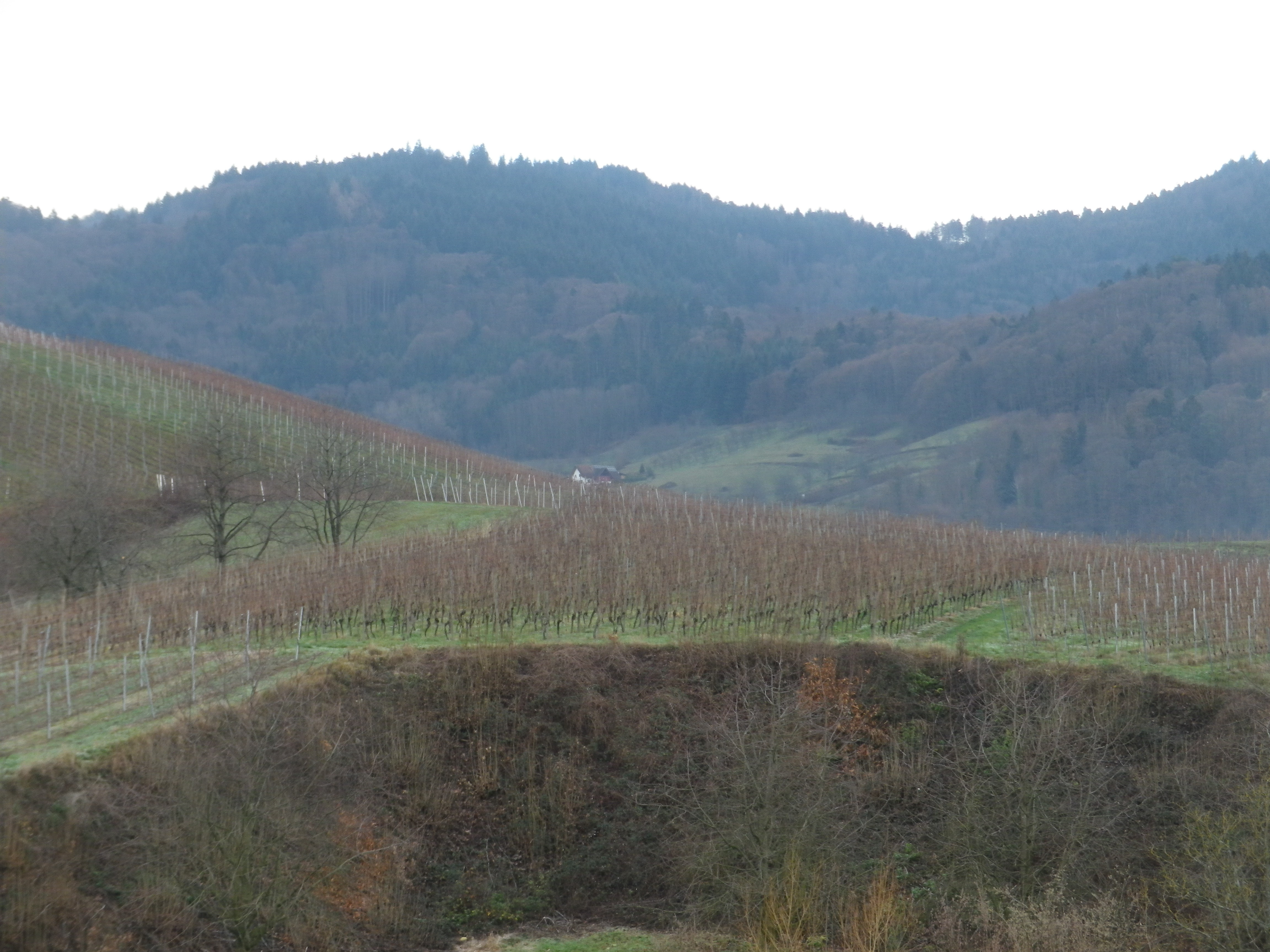
Wine Notes: Ortenau’s Kappelrodeck
What I Learned:
Certainly one of the most fascinating vineyard areas in Baden’s Ortenau wine district, the area around Kappelrodeck and Waldulm stands out as topographically impressive for growing grapes in a never-to-be-forgotten mixture of hill and dale.
Slopes are steep. Hills cluster close together. The profile of the hills resembles a grape cluster lying on the ground: round mounds intersected by narrow dales. This topography is ideal as far as the vines’ exposition to the sun goes. Being steep, rainwater drains well away from the vines. Additionally, the area lies in a valley sheltered by higher ridgelines to the north, south, and east. As a result, even though this area of Germany has its share of foggy or overcast, even rainy, days, when the sun shines, each grape stands a good chance of getting some decent exposure to its warming and ripening rays.
Durch Die Weinberge: Trail in a Nutshell
Trail Name: Kappelrodeck – Durch die Weinberge (Through the Vineyards)
Trail Type: A mid-distance circuit itinerary; well-maintained, and on mostly paved or even, hard-packed surfaces; marking on the trail is directional to the next itinerary point and not specific or exclusive to this itinerary.
Length:
Total – 10 kilometers/6 miles
Convenient to: Baden-Baden or Karlsruhe, Germany
Marking: None specific to the trail, but a series of sign posts will indicate the way to the next one along the itinerary (See itinerary below).
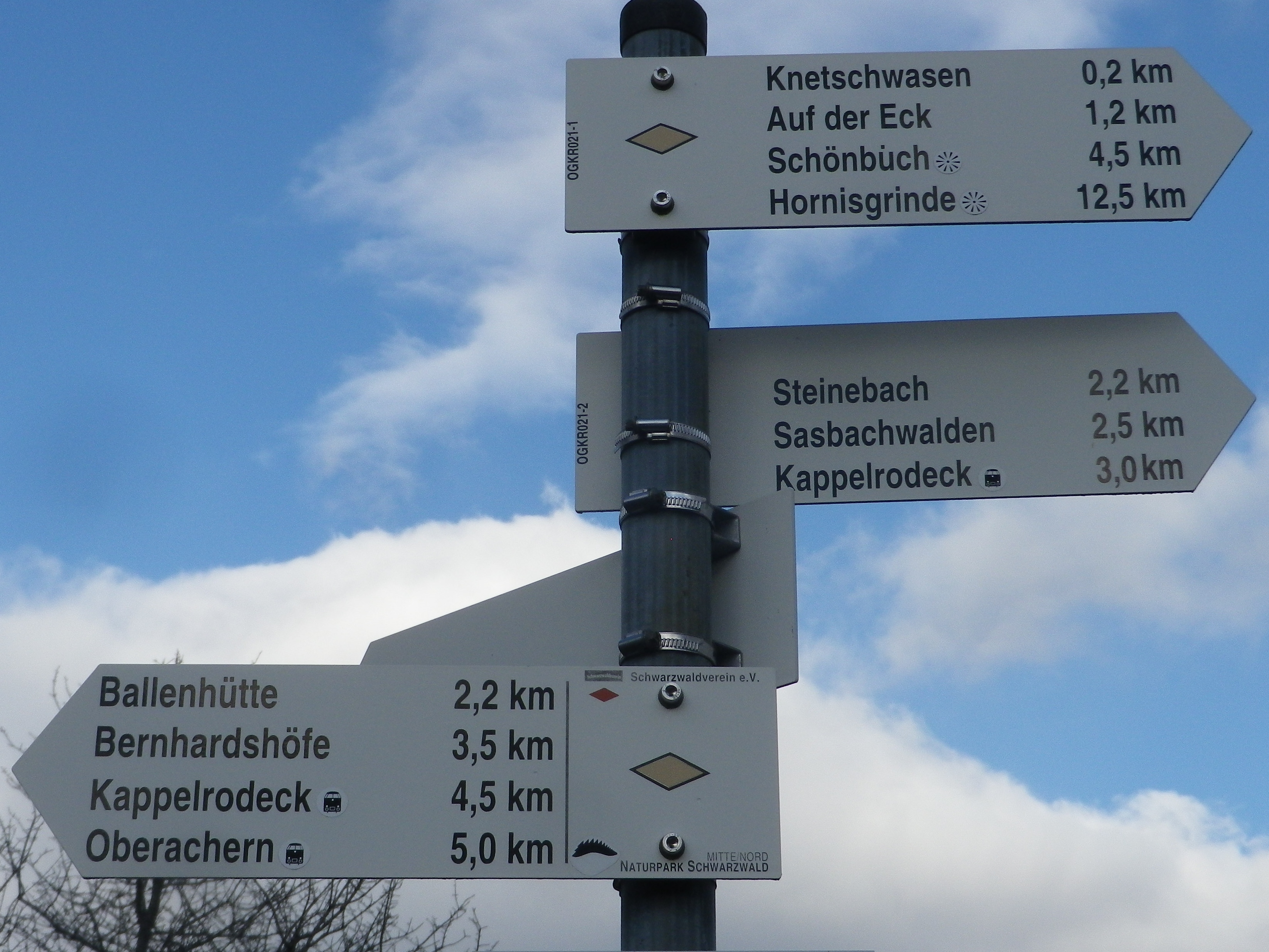
Gallery April 2019
Riesling Wine Wandering
Increasingly, wine regions, especially those growing iconic grape varietals, sponsor varietal wine walking trails. Riesling is an especially important varietal in the Rhine River Valley. When I heard of one such trail in the wine region of Baden, I decided to visit.
The Riesling Weg (Trail) is located in the village of Eisental. In this part of the Baden wine region, the Ortenau, Riesling is the single-most cultivated varietal. Riesling can be a challenge to grow, given the lack of sunshine some years, and the steep slopes required to ensure maximal sun exposure when there is any. However, this Riesling trail was not challenging, and is easy enough for the whole family to enjoy.
First, there was the village. Small, compact, and nestled in a hollow, it was an oasis of tranquility. The old nucleus of the village, set around the church and town hall (Rathaus), was untouched by tourism – So laid back that it has only one eatery in the center.
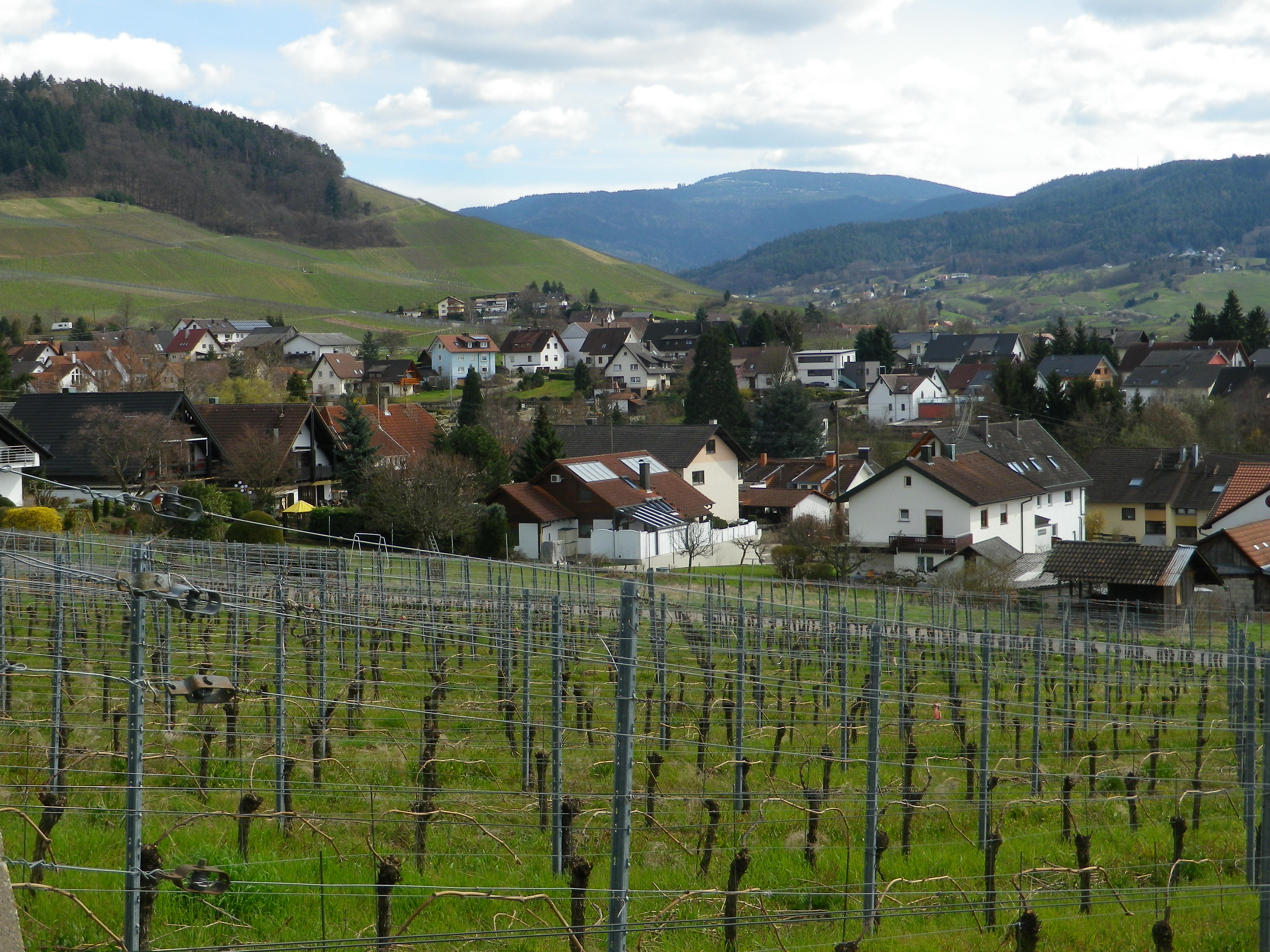
Wine Notes: Ortenau Riesling
What I Learned
Riesling grows in every German wine region, and in some, a lot more than others. In the Baden wine region, Riesling is the single most cultivated white varietal. The Ortenau, in particular, grows more Riesling proportionally, than any other wine area within the Baden wine region.
Riesling has a long and interesting history here. Traditionally, the name Klingelberger applies to Riesling wine from the Ortenau. In a nod to this tradition, you can still find Riesling wine sold under this label, (much as you can find Pinot Noir grown in Affental, bottled under the name Affentaler). Another tradition involves the use of the uniquely shaped flat Bocksbeutel as the bottle of choice. The Bocksbeutel is traditionally associated with the Franken/Franconia wine region, but this area of the Ortenau adopted its use in the 1700s, when a nobleman from Franconia took up residence here, and bottled his wines using the Bocksbeutel. After a lengthy legal suit in the 1970s over Franconia’s exclusive right to use the Bocksbeutel, the court upheld the Ortenau tradition, ruling that outside Franconia, only the Baden areas around Neuweier, Steinbach and Varnhalt could bottle their wine that way.
Rieslingweg: Trail in a Nutshell
Trail Name: Rieslingweg
Trail Type: Short distance circuit trail; well-maintained and almost exclusively paved, very good marking on the trail
Length:
Total – 7.1 kilometers/4.4 miles
Convenient to: Baden-Baden, Germany
Marking: Green grapes with a green leaf on a white (sometimes yellow) background
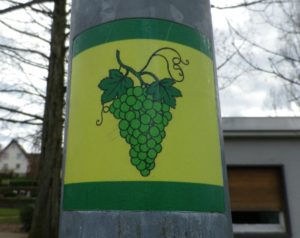
Monkeys and Wine
While it might not be true wine, monkeys do consume, quite deliberately, fermented fruit juice found in the wild.
A theme of monkeys and wine drew me to a hike in the Affental, not far from Baden-Baden, Germany. A possible translation of Affen-tal, is Monkey Valley. Wine from this area is duly bottled with a monkey embossing the front of the bottle. I had often wondered about this somewhat incongruous mascot, and a visit to the local cooperative, Affentaler Winzer, provided an opportunity to taste the local wines, and learn more about the viticultural history and practices of the area. The short hike gave me an opportunity to wander through the vineyards of Affental.
Wine Notes: Affental Red Wine
What I Learned
Monkey Valley, or Affental, in German, has a long history of wine making. Located just south of Baden-Baden, this corner of Baden, Germany long attracted and encouraged monastic foundations. As is often the case, it was medieval religious who established the viticulture of the region, as they needed communion wine. In this case, the 13th century Cistercians from the Lichtenthaler Monastery of Baden-Baden planted Pinot Noir vines in this area of steep slopes with good exposure to the sun.
The practice of viticulture has continued ever since. In 1908, local vintners created the Affentaler Winzer, a cooperative winery. This cooperative focused on red wine production. Although other cooperatives were also in Eisental, Affentaler Winzer has since incorporated them into its cooperative. Affentaler wine has stood out, literally, since 1949, as the Affental Winzer red wine bottles have a raised metal plaquette of a monkey on them.
